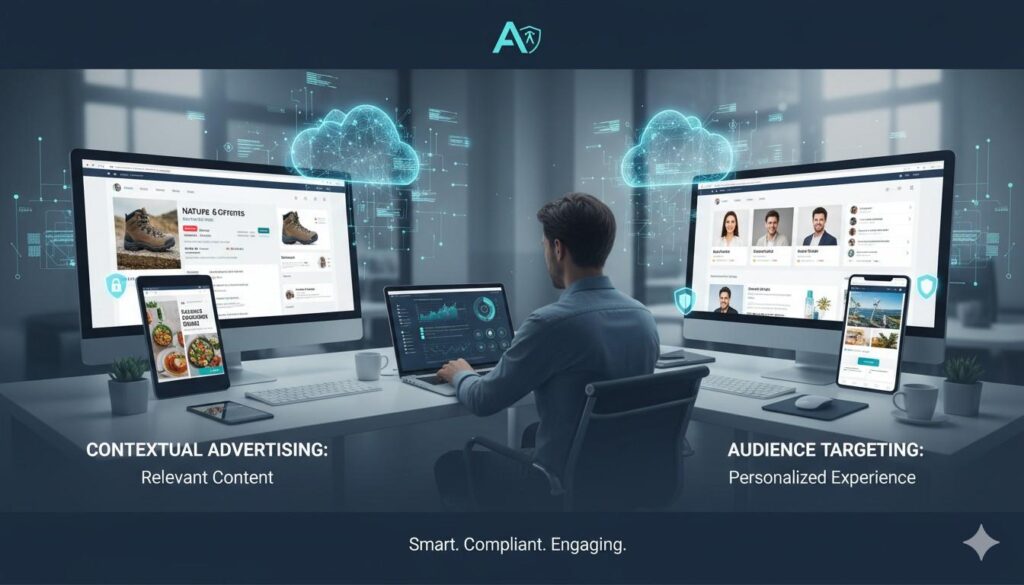For over a decade, YouTube advertisers have relied on a familiar suite of metrics to gauge performance: click-through rate (CTR), cost per view (CPV), view-through rate (VTR), and impressions. These have long served as the standard indicators of digital advertising success, shaping strategy and spending. According to Google’s own playbooks, these metrics were once considered sufficient proxies for user engagement and ad resonance. A high VTR suggested your video was worth watching. A low CPV signaled cost efficiency. But here’s the rub: views don’t equal attention, and clicks don’t mean connection.
Today’s YouTube landscape demands a deeper approach. We’ve entered an era where capturing someone’s attention is no longer the finish line, it’s the starting point. Modern consumers are savvy. They multitask, they scroll past, they ignore. An ad might technically be “seen,” but was it actually noticed, felt, or remembered?
This is the core of the measurement paradigm shift. Increasingly, marketers and platforms like Filament are reframing success through a sharper lens: Campaign effectiveness = attention + emotion + Quality. It’s not about forcing someone to view it. It’s about making them care enough to remember, and maybe even act.
The result? You may get the illusion of performance views climbing, CPV shrinking but zero long-term brand impact. Marketers often chase metrics that are easy to inflate but hard to connect with meaningful outcomes. The industry is now waking up to the reality that what we’ve been measuring doesn’t reflect what truly matters: emotional resonance and memory formation.
A 2022 Think with Google report confirmed this shift, noting that traditional ad metrics often fail to account for how ads influence consumer perception and behavior over time. In other words, high numbers on the dashboard don’t mean you left a mark.
Why Traditional KPIs Fall Short
Let’s break down where legacy metrics miss the mark:| Metric | What It Tells You | Why It’s Limited |
| Views/VTR | Indicates if the video played fully | Doesn’t guarantee mental focus; autoplay or passive exposure |
| CTR | Measures immediate interaction | Can reflect bait-y thumbnails or misleading prompts |
| CPV | Shows cost-efficiency per view | Ignores the depth of engagement or impact on brand recall |
| Impressions | Count visibility moments | Includes partial loads, background tabs, and even bot traffic |
Advanced Metrics Beyond Views and Clicks
1. Attention-Based Metrics: The New Gold Standard
A. Attention Time
Forget measuring whether an ad was on screen, was the viewer’s brain engaged? This is where cognitive attention time comes into play. It measures how long someone is mentally locked in, using tools like eye-tracking, scroll behavior, and even heatmaps. Attention isn’t binary, it’s a spectrum. And this metric quantifies the moments when viewers are truly tuned in. Check out Adelaide for attention measurement.B. Attention Impressions vs. Viewable Impressions
There’s a significant gap between an ad being “on screen” and being processed. Attention Impressions measure active mental engagement, not just visibility. One useful metric here is AAS/1000 (Active Attention Seconds per 1,000 Impressions), which provides a much more grounded sense of how deeply your content lands with audiences.2. Emotional Engagement: Measuring Viewer Resonance
Emotional Psychological Frameworks
Using structured models like the Wheel of Emotions, advertisers can design campaigns that evoke specific emotions such as awe, empathy, or surprise. Emotional mapping helps identify what moves people to action when applied across the customer journey. Notably:- Emotional content drives purchase decisions 2× more than rational messaging.
- Emotionally engaged consumers deliver 23% more lifetime value.
- Brands with high emotional connection scores grow revenue by up to 70%.
3. Long-Term Brand Impact: Beyond Immediate Interactions
A. Brand Lift Studies
It’s one thing for someone to watch your ad. It’s another for them to remember it a week later. Google and many other providers offer Brand Lift Studies that can cover awareness, recall, preference, and consideration. These studies ask viewers questions days or weeks after exposure, measuring ad recall, favorability, and purchase intent. The insights tell you if your message is stuck or passed through unnoticed.B. Search & Action Lift
Did someone search for your brand after watching your ad? Visit your website and convert. By integrating YouTube Brand Lift with Google Ads Search Lift, advertisers can track action-based outcomes post-view, giving a clearer view of the campaign’s ripple effects.Cross-Platform Attribution & Conversion Lift
A. Click-Through & View-Through Attribution
YouTube’s non-click environment makes standard CTR misleading. Instead, view-through attribution traces conversions after an ad is watched, even if no click happened. This matters in “soft intent” campaigns aiming to nudge, not push.B. Incrementality Testing
Are your ads actually driving behavior change? Incrementality tests use geo-based splits, ghost ads, or synthetic control groups to isolate the true lift caused by a campaign, separating correlation from causation.C. Cross-Device Behavior Mapping
Using tools like MTA, MMM or data clean rooms, advertisers can now track a user’s journey: they see the ad on mobile, search the brand on a second screen, and convert it to a desktop. Privacy concerns and cookie depreciation are headwinds to MTA, so MMM can be a good long-term choice.Content Evaluation Metrics
Filament uses human review to confirm that every YouTube channel is brand safe.- Tech analyzes YouTube channel, tags, and keywords
- Tech assigns a high-level category of content
- Human reviews the channel for topic and safety. If unsafe, kids, or foreign, it’s labeled as such.
- The channel is added to topic(s) where it fits.
Best Practices for High-Fidelity Measurement
To move beyond vanity metrics, here’s what smart advertisers are doing:- Triangulate your data: Use various metrics and tools to understand what’s resonating and what’s not. No one tool will have all the answers, so you have to triangulate the ‘truth’ across systems.
- Optimize for attention, not forced impressions.
- Create feedback loops: Let measurement inform your next round of creative development.
Final Thoughts: The Future of YouTube Ad Measurement
Views or clicks no longer define success on YouTube, it’s defined by connection. As platforms become more sophisticated and audiences become more discerning, the industry must evolve its definition of performance. Brands chasing legacy KPIs will miss the forest for the trees. However, those that embrace emotional resonance, attention metrics, and memory-based models will measure success more accurately and start building brands people remember. In a world of fleeting impressions, emotional impact is the only true metric that endures. Want to measure what actually matters? Explore how Filament brings human insight to performance data.FAQ
Why are views and click-through rates no longer sufficient for measuring YouTube ad performance?
Views and CTR measure surface-level activity, whether the ad was played or clicked, but not if it captured real attention, evoked emotion, or was remembered. Many views are passive, and clicks can be misleading. These metrics don’t reflect brand impact, long-term recall, or consumer behavior shifts.
What is attention time, and how is it measured?
Attention time captures how long a viewer mentally engages with an ad, not just watching it but actively processing it. It’s measured using tools like eye-tracking panels, gaze heatmaps, and scroll behavior analysis to quantify actual attention rather than screen presence.
How can emotional engagement be quantified in video advertising?
Emotional engagement is measured through facial coding, emotion AI, and emotional curve mapping. These tools track micro-expressions and emotional shifts in real-time, generating data on how viewers feel, joy, frustration, indifference, at each moment of the ad. Frameworks like the Wheel of Emotions help categorize and apply this data for campaign optimization.
What is incrementality testing, and why is it critical for YouTube attribution?
Incrementality testing determines whether an ad caused a behavior (like a purchase) that wouldn’t have happened otherwise. It isolates true campaign impact by using geo-splits, ghost ads, or synthetic control groups. This method provides the most accurate attribution on YouTube, where conversions often occur without clicks.

I’m a results-driven marketing leader with 10+ years of experience building integrated media strategies that drive measurable ROI. As COO and co-founder of Filament, I shape the product roadmap, sales, and campaign performance. My background spans brand and performance media for top brands like Slack, Bumble, and Jenny Craig. A frequent speaker on measurement, I bring deep expertise in ad tech, data strategy, and media buying—always with a sharp focus on business impact. Previously I founded an attribution company, where I led campaign planning, attribution modeling, and executive-level reporting across TV, digital, and CRM channels.



